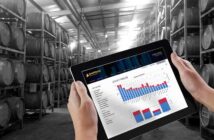By Gary Hartley
No company wants to recall products. The process can be costly and time consuming, not to mention the potential for damage to brand and earnings. But recalling a faulty or harmful product from the marketplace or pulling it back from the supply chain is sometimes an absolute necessity.
At that point, you need an efficient, lowest cost means for notifying trading partners and, in some cases, consumers that the product must be taken off the shelves, or out of the warehouse, storeroom or freight consignment. Other actions after that might need rapid notification as well.
And you need such means to be readily available at any time in the normal course of business. No company can foretell when a recall or withdrawal will be needed – and usually, with urgency.
The solution is clearly some form of standardised electronic communication between product manufacturers or suppliers, and their partners along the supply chain – communication that can be instantly recognised for what it is, that also encompasses all necessary information and leads to effective action.
One company placed to create and maintain this solution is GS1, a trusted source of product data and a provider of smart business services in more than 100 economies worldwide.
GS1 is currently developing a global standard for online product recall systems based largely on experience to date in North America and on well-proven GS1 standards for supply chain management and e-commerce.
In New Zealand, GS1 is about to launch GS1 ProductRecallNZ, a web portal that enables registered users to prepare and distribute standardised recall and withdrawal notices, ultimately in any sector economy-wide. (NZ FOODtechnology February issue page 3)
GS1 ProductRecallNZ has been designed and piloted as an easy-to-use service for sending clear, unambiguous and actionable messages through supply chains. Precision in identifying products, business entities and locations is obviously fundamental, as are standardised formatting and procedures for sending and receiving recall notices.
GS1 New Zealand has drawn on experience to date with product recall web portals in North America and Australia, and on development work for the global standard. GS1 is beginning with the food and grocery sector, where supermarket operators and their major suppliers thoroughly understand the issues. These companies know all about the trials and tribulations of paper-based or ad hoc email product recall procedures.
GS1 ProductRecallNZ is very much an industry-based solution, created and rolled out to fit New Zealand circumstances and requirements sector-by-sector. It will go live in July, with first users in food and grocery invited to register during May and June. Over time, the service will be rolled out to more sectors, with pharmaceuticals an obvious area of focus.
Registration is a critical first step for users (many of them, of course, GS1 members). In fact, GS1 ProductRecallNZ will only be available to companies
– manufacturers, suppliers, distributors, wholesalers and retailers – who have been registered for eight weeks or longer.
This is not a service you join and use when you have a problem. It is a service to be integrated into business planning and treated as a form of insurance against the damage that product faults and product recalls can cause, to your consumers and customers as well as to your brand and earnings.
Registered users will pay a subscription based on their level of turnover and on GS1’s cost recovery needs. And of course, the value of GS1 ProductRecallNZ to the individual user will rise with the increased level of registration among their trading partners.
It makes most sense for product suppliers to have as many of the “down stream” participants in their supply chains registered as possible, even those which have no visibility. The faster a product can be stopped and appropriate action taken, the better for everyone.
Product recall is not rocket science, but making it happen quickly and at the least cost is still a challenge. Now is the right time, at least in the food and grocery sector, to take up the challenge.





























































































